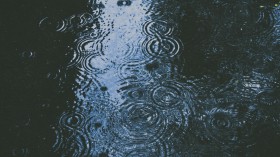On cool, misty mornings at Australia's Mount Kaputar National Park, the forest floor is covered with hundreds of hot pink slugs.
Indeed, the slugs are "as bright pink as you can imagine," according to Michael Murphy, a ranger with Australia's NSW National Parks and Wildlife Service, who interviewed with the radio station ABC Illawarra.
The 20 centimeter (7.8-inch) slugs have only been reported on Mt. Kaputar, a 1,500 meter (5,000 foot) peak about 400 km (250 miles) north of Sydney.
An active volcano, Mt. Kaputar and the land around it is a declared wilderness area with the highest protection under Australian conservation law. The park lies on the interior plains of the New South Wales territory and because of its elevation receives much more rain and snowfall than the areas that surround it.
It's a perfect place for things to grow, and the pink slugs - which likely developed their distinct color as a form of camouflage among the fallen red eucalyptus leaves on the forest floor - play a role in the local ecosystem by breaking down leaf litter on the ground and serving as prey for birds and other animals.
''I'm a big believer in invertebrates,'' Murphy said to the Sydney Morning Herald. ''People tend to focus on the cute and cuddly bird and mammal species like koalas. But these little behind-the-scenes invertebrates really drive whole ecosystems.''
The slugs feed on algae growths on tree trunks in the night and are most readily spotted in the morning hours when they are commuting from the feeding grounds back to their hiding spots where they spend the days.
"On a good morning, you can walk around and see hundreds of them," Murphy said.
The pink slugs are not the only unusual mollusk found on Mount Kaputar. The park is also home to three types of cannibal snail, cunning predators that trap their snail victims by crawling into the shells of their prey and eating them from inside out.
© 2024 NatureWorldNews.com All rights reserved. Do not reproduce without permission.





